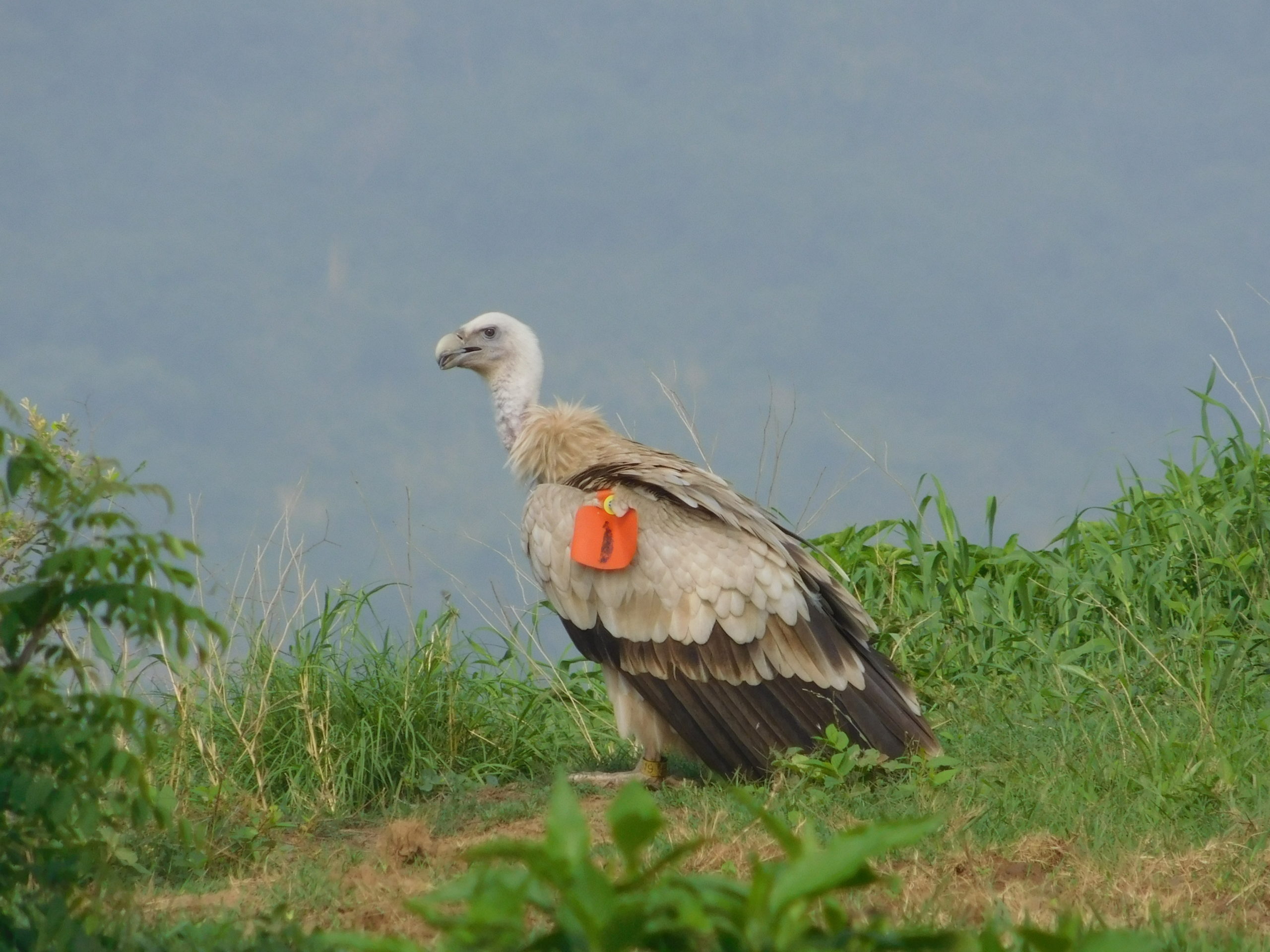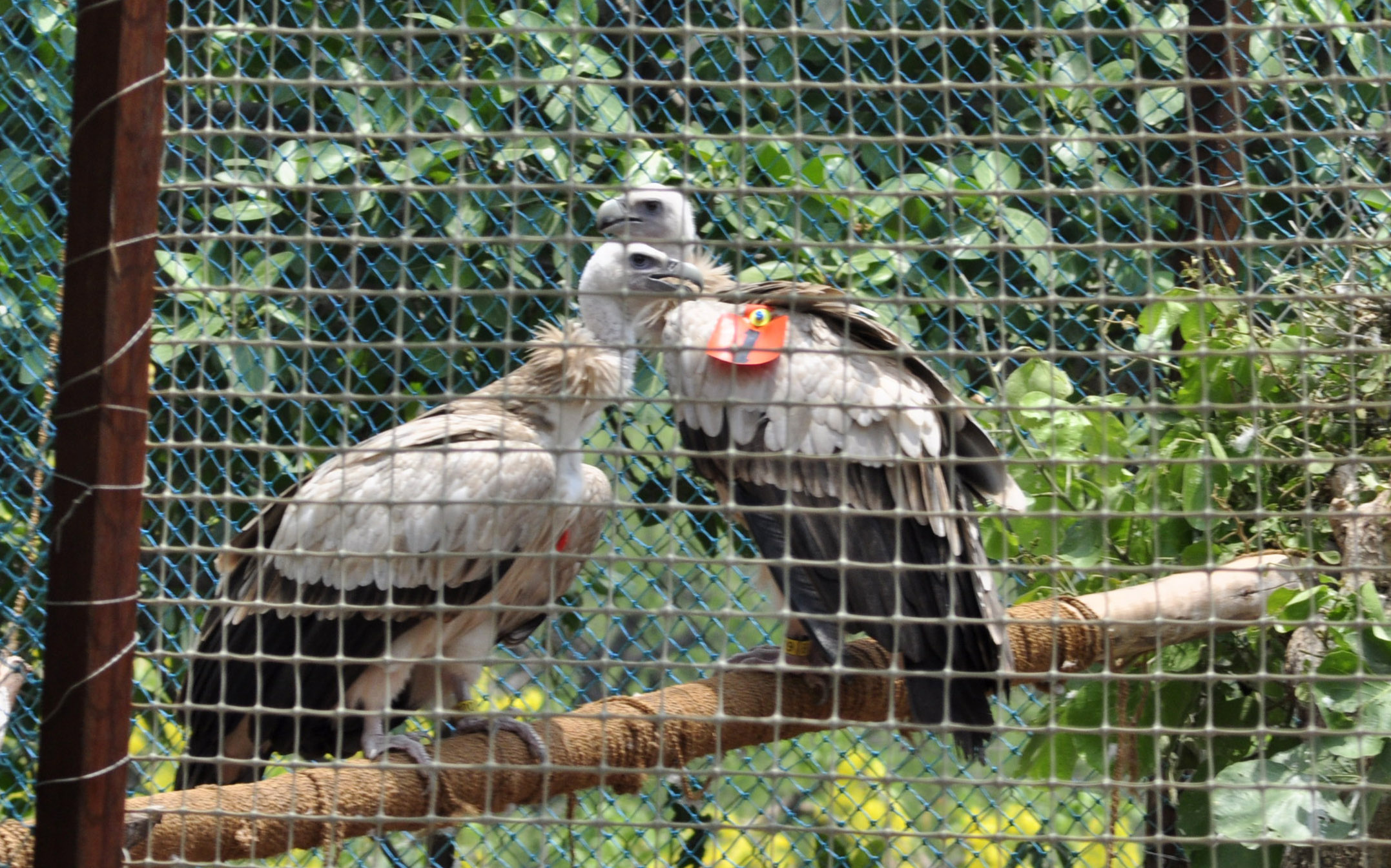COVID-19 delays India’s captive-reared vulture release programme
India’s captive-reared vulture release programme, a first-of-its-kind initiative to study the massive decline in vulture population, has been delayed. Again.


A vulture resting at aviary inside Jatayu Conservation Breeding Centre in Haryana’s Pinjore. Photo: Amit Arora
Chandigarh
Lord Rama has been dominating national headlines for over a week now. In the Ramayana, Jatayu, the heroic king of vultures, tried his best to stop Ravana from abducting Sita Devi, princess of Mithila and wife of Rama, and put up a valiant fight. Jatayu failed and lost both his wings in the battle. He breathed his last after showing Rama and his brother Lakshmana the direction Ravana flew with Sita.
Jatayu’s descendants, vultures, are scavengers. It is responsible for keeping the environment free of carrion, an important part of maintaining the order in the ecosystem. However, there has been a sharp decline in the population of vultures in the country – from 40 million to 19,000 in a span of over three decades – as per what the Union ministry of environment, forest and climate change appraised the Parliament during monsoon session last year.
This makes the work done by vulture-breeding centres utmost important. Eight out of Asia’s 10 vulture-breeding centres are in India; Nepal and Pakistan have one each. The Jatayu Conservation Breeding Centre in Haryana’s Pinjore area, 30 miles from here, Asia’s first and biggest so far, currently breeds 40 eggs a year.

The COVID-19 outbreak has delayed the release of six captive-reared white-backed vultures, a first-of-its-kind programme in the country to study the massive decline of the critically-endangered species and check their survival into the wild. The survival of these six birds is key to the country’s captive-breeding release programme that began in 2001 at the Pinjore centre in the wake of a drastic fall in the vulture population in India.
Dr Vibhu Prakash, Bombay Natural History Society’s deputy director and Pinjore centre head, said that their original release was planned in April 2020, but that was put off due to the pandemic and the subsequent lockdown. “Now, we have aligned their release in October with the migration of Himalayan griffon vultures from central Asia and China into northern India, who will possibly act as their guides for food, shelter and basic necessities,” said Vibhu. He also said that two other wildly-caught vultures will accompany these six birds.

Nepal was the first country in Asia to release eight captive-bred vultures in 2018. The flight of these six endangered vultures from India is much awaited. Apart from survival check, the Pinjore centre will also study their food availability, the prevalence of habitat and how they behave with fellow birds since they have not interacted with the outer world since birth.
According to Vibhu, these birds were either nurtured in a cage or trained in a pre-release aviary. “But, we have seen them making contact with vultures of the outer world. Hopefully, their release, first such experiment in India, will go well,” Vidbu told Gaon Connection.
The sharp decline in vulture population
In India and Nepal, cows are considered sacred for Hindus and are usually not killed for meat. As a consequence, livestock carcasses became available for vultures here and it became the principal food source for the resident species. However, cow carcasses became the very reason for the death of vultures.
A Bombay Natural History Society (BNHS) paper said tens of millions of vultures used to be present across the Indian subcontinent. As per the paper, scientists, in 2003, established that a veterinary pain-relief drug, a non-steroidal, anti-inflammatory drug – Diclofenac – given to cattle to treat pain and inflammation, caused kidney failures in vultures after they fed on diclofenac-infected carcasses.
The Pinjore centre played an important role in confirming that Diclofenac was the main cause of vulture mortality and population crash in vultures. “If they manage to stay alive in the wild and don’t die because of drug-related complications, the Pinjore centre will release 25 captive-reared birds of endangered species every year so that they multiply and revive again. Similar efforts will be made from other centres as well,” said Vibhu.
While vulture decline in India was first quantified at Keoladeo National Park, Rajasthan, between 1985-1986 and 1996-1997, a BNHS survey in 2007, held every four years in collaboration with MoEFCC, revealed that India’s three most prevalent vulture species – the white-backed, the long-billed and the slender-billed – listed critically endangered now, declined by a staggering 97 to 99.9 per cent. In his written reply, Union Environment Minister Prakash Javadekar said that based on the latest survey carried out in 2015, and the results published in 2017, there were about 6,000 white-backed vultures, 12,000 long-billed vultures, and 1,000 slender-billed vultures left.
The use of Diclofenac has reduced in cattle treatment since its ban in 2007 but, two other non-steroidal, anti-inflammatory drugs – Ketoprofen and Aceclofenac – still being used are also known to be toxic for these birds and are a matter of worry in India’s vulture preservation effort. BNHS that found evidence of morality of vultures due to these two drugs, recently gave a representation to the Indian government to ban these two drugs for the use of veterinary treatment.
“Painkillers that have not been safety-tested for vultures should not be licensed or used in veterinary practice across Asia. Otherwise, vultures will no longer be available, creating ecological disaster in time to come,” Vibhu told Gaon Connection.
Satellite devices to keep track of Pinjore vultures
All the birds to be released from the Pinjore centre will sport satellite transmitters – called platform terminal transmitter (PTT) – each weighing 30 grams, in their wings. They have been trained for two-three years to live with these, using dummy devices. It is fixed with Teflon strings under the wings. The centre will keep an eye on them till the time they don’t start breeding.

This is done to keep a proper check on their movement. According to the Pinjore centre, the vultures may remain in a radius of 200 km once they venture out. The satellite transmitters fitted on them will relay their location in latitude and longitude.
These devices are linked to Argos satellite tracking, a satellite-based system that will send four readings a day on their movement. If their location is static for days, it means something is wrong. The ground team will track the vultures and retrieve them.
The procurement of these PPTs was a major headache for the Pinjore centre. The process began in 2015 when the centre first approached the Indian government’s telecom department for permission to procure them and release the radio frequency. Then, over two years were spent in the procurement of these devices. It was finally made available to the Pinjore centre last year.
Why is the survival of vultures important?
In the early 1990s, vultures consumed around 20 million tonnes of carrion. With the complete collapse in vulture numbers, South Asia has now lost 99 per cent of its carcass disposal system.
Saving Asia’s Vultures from Extinction (SAVE), a consortium of 24 partners from India, Pakistan, Bangladesh, Nepal, has linked vulture-population decline with an increase in feral dogs across the region due to easy availability of cattle carcasses. The government statistics in India showed feral-dog populations that numbered 17-18 million in the early 1980s were close to 30 million now.
The possibility of the increasing dog population furthering the spread of rabies in the region is a cause of major concern. India has the highest incidence of rabies in the world and of the 20,000 rabies deaths each year, 96 per cent are a result of dog bites, SAVE said.
An economic evaluation of the costs associated with the decline of vultures and management and the cost of rabies in India runs into billions. The costs of conserving vultures are a fraction of this total according to SAVE.
Vultures were so abundant once that the followers of Parsi religion in India and the Buddhist communities on the Tibetan plateau utilised these birds for sky burials to cleanly and efficiently dispose of human bodies, the BNHS paper said. SAVE also said the decline in vulture numbers have forced the Parsis to cremate their dead, against their tradition.
“As many as 70 vultures consume a cow carcass in just half an hour which otherwise can rot, infecting domestic animals, pollute water and increase the number of stray dogs,” said Jemima Parry-Jones, Director, International Centre for Birds of Prey, United Kingdom, during the SAVE programme in Chandigarh. “So, if these valuable species become extinct, we will be held guilty for their disappearance,” he added.

